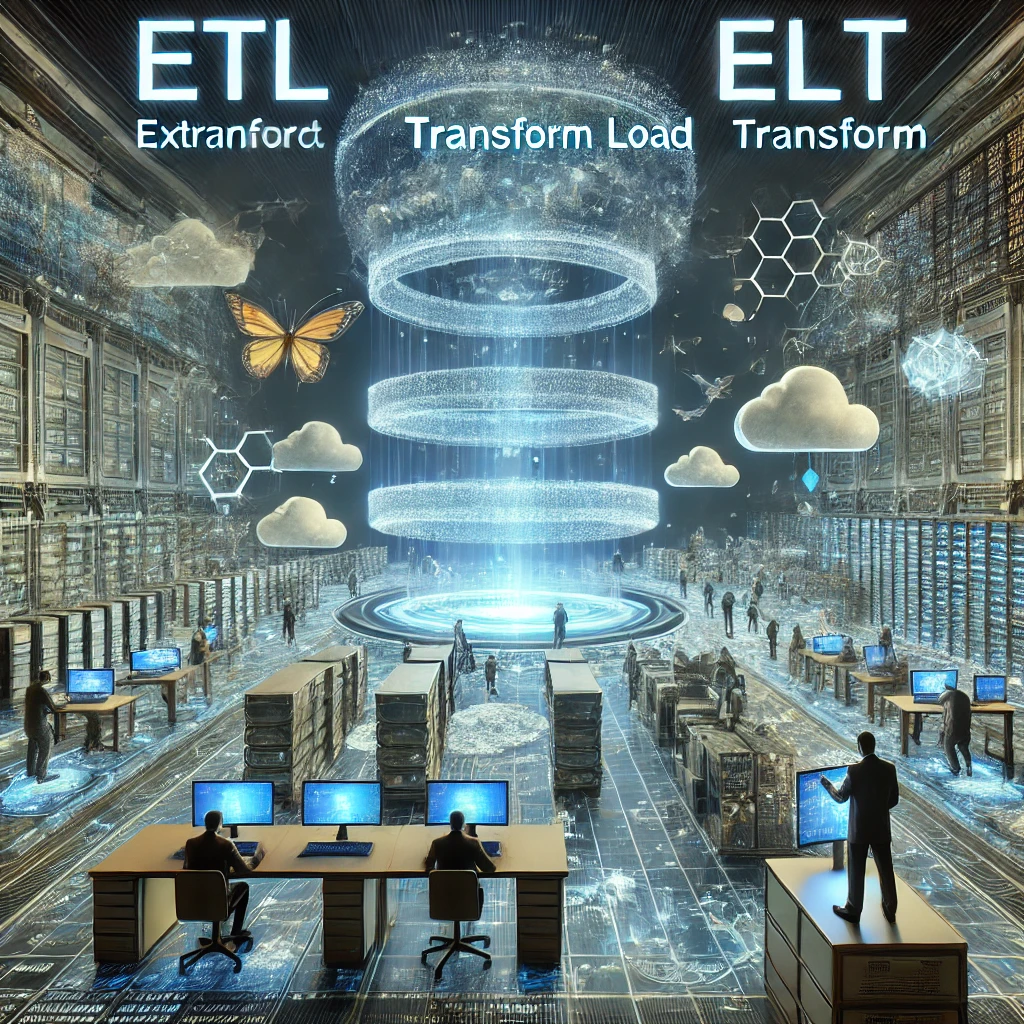A Comprehensive Guide to Data Storage Engines and Processing in 2024
Data storage engines and processing methods form the foundation of modern data systems, powering everything from transactional applications to real-time analytics. As organizations handle increasing amounts of data, choosing the right storage and processing methods is critical for efficiency, scalability, and performance.
In this guide, we will cover: ✅ Types of data storage engines
✅ Transactional (OLTP) vs. Analytical (OLAP) processing
✅ ETL vs. ELT for data transformation
✅ Batch vs. Stream processing
✅ Modern trends in data storage and processing
1. Understanding Data Storage Engines
Data storage engines determine how data is stored and retrieved in databases. The choice of engine affects performance, scalability, and query efficiency.
🔹 Example: A financial system requires ACID-compliant transactions, while an AI-powered analytics system requires fast, scalable reads.
There are two primary types of storage engines:
- Transactional Processing (OLTP)
- Analytical Processing (OLAP)
2. Transactional Processing (OLTP)

OLTP (Online Transaction Processing) is optimized for real-time transactions. Every day, millions of transactions occur in applications like e-commerce, banking, and social media.
🔹 Example:
- E-commerce purchase – Adds an item to a cart and processes a payment.
- Social media post – Updates user activity and notifications in real time.
OLTP Key Features
✅ Fast transactions with low latency.
✅ High availability – The system must always be online.
✅ Concurrency handling – Multiple users can read/write simultaneously.
3. ACID Properties in OLTP
OLTP databases follow ACID principles to ensure data reliability.
| Property | Description |
|---|---|
| Atomicity | Either all parts of a transaction succeed or none. |
| Consistency | Ensures data integrity by following predefined rules. |
| Isolation | Multiple transactions occur independently. |
| Durability | Once committed, data is permanent—even if the system crashes. |
✅ Example: If a user books a flight but the payment fails, the system must cancel the booking automatically.
🚨 Limitations of OLTP:
- Not optimized for complex queries (e.g., “What are the top-selling products this year?”).
- High costs for scaling transactional workloads.
4. Analytical Processing (OLAP)
OLAP (Online Analytical Processing) is designed for aggregating and analyzing large volumes of data. It helps organizations extract insights and trends.
🔹 Example:
- A business intelligence dashboard analyzing sales trends over the past year.
- A healthcare system predicting disease outbreaks based on past data.
OLAP Key Features
✅ Optimized for analytical queries – Faster data aggregation.
✅ Columnar storage – Allows efficient scans across multiple rows.
✅ Supports multi-dimensional analysis – Looking at data from different angles.
🚨 Limitations of OLAP:
- Not ideal for high-frequency transactional updates.
- Requires more storage and computational resources.
5. ETL vs. ELT: Data Transformation Approaches

Data needs to be processed, cleaned, and stored efficiently before use in analytics.
A. ETL (Extract, Transform, Load)
✅ Traditional approach where data is transformed before storage.
✅ Used in structured environments like data warehouses.
✅ Ensures clean and consistent data before analysis.
🔹 Example: A company extracts customer data from multiple sources, transforms it into a standard format, and loads it into a database.
B. ELT (Extract, Load, Transform)
✅ Modern approach where data is stored first and transformed later.
✅ Used in big data and cloud systems like data lakes.
✅ More flexible but requires powerful processing.
🔹 Example: Companies using Google BigQuery or Snowflake store raw data first and then process it based on need.
🚨 ETL vs. ELT: Which One to Choose?
| Feature | ETL | ELT |
|---|---|---|
| Processing Timing | Before storage | After storage |
| Best For | Structured data | Big data & real-time analytics |
| Storage Cost | Lower | Higher |
6. Batch vs. Stream Processing

Modern data systems require processing both historical and real-time data.
A. Batch Processing
✅ Processes data in bulk (e.g., hourly, daily).
✅ Used for reporting, data warehousing, and offline analytics.
✅ Examples: Hadoop MapReduce, Apache Spark.
🔹 Example: A ride-sharing company calculates average ride price per day.
🚨 Limitation: High latency – Cannot be used for real-time applications.
B. Stream Processing
✅ Processes data in real time (milliseconds to seconds).
✅ Used for fraud detection, recommendation systems, and IoT applications.
✅ Examples: Apache Kafka, Apache Flink, Spark Streaming.
🔹 Example: A stock market app that updates share prices in real time.
🚨 Limitation: Requires high compute power.
✅ Batch vs. Stream Processing: When to Use?
| Feature | Batch Processing | Stream Processing |
|---|---|---|
| Data Type | Historical Data | Real-time Data |
| Latency | Minutes to hours | Milliseconds |
| Best For | Reports & analytics | Live dashboards & fraud detection |
7. Modern Trends in Data Storage & Processing

Technology advancements have led to hybrid storage solutions that combine both OLTP and OLAP capabilities.
A. Separation of Storage & Compute
Modern databases like Google BigQuery, Snowflake, and Teradata store data separately from processing engines.
✅ Benefits:
- More scalable and cost-efficient.
- Allows multiple processing engines (OLTP, OLAP) to query the same data.
B. Real-Time Data Pipelines
Organizations are moving towards real-time analytics, where transactional and analytical workloads are processed simultaneously.
✅ Tools Supporting Real-Time Pipelines:
- Apache Flink, Kafka Streams (Stream processing).
- Delta Lake, Apache Iceberg (Hybrid OLTP & OLAP solutions).
🔹 Example: A smart home system processes sensor data in real time while maintaining historical logs for trend analysis.
8. Best Practices for Data Storage & Processing
✅ Use OLTP for transactions and OLAP for analytics.
✅ Choose ETL for structured environments and ELT for big data.
✅ Use batch processing for reporting and streaming for real-time insights.
✅ Leverage modern hybrid solutions like Google BigQuery and Snowflake.
✅ Monitor performance using tools like Apache Spark UI, Kafka Monitoring, and Prometheus.
9. Final Thoughts
Choosing the right data storage engine and processing method depends on your application needs, data volume, and performance requirements.
💡 Which storage and processing method do you use in your projects? Let us know in the comments! 🚀